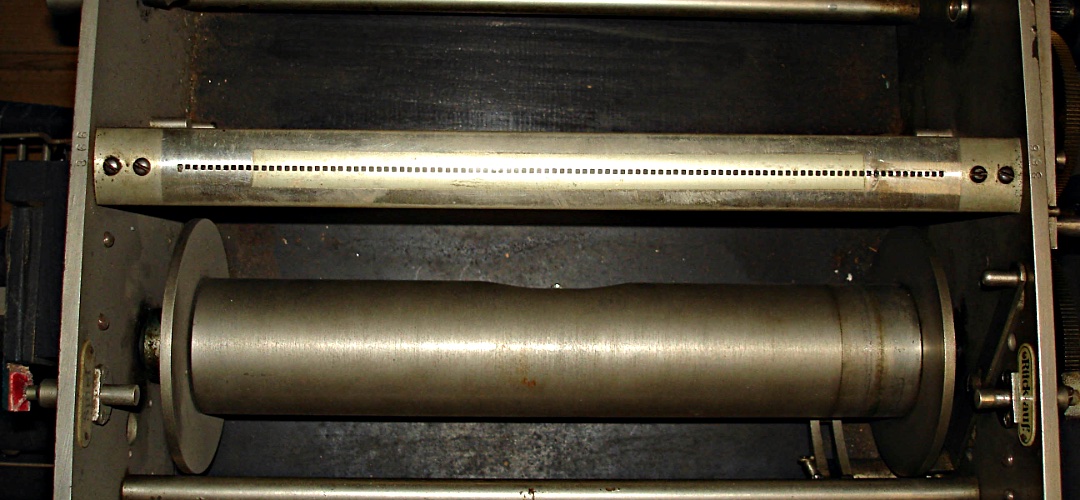Phillips AG in Frankfurt introduced the DUCA reproduction system to the market in 1908. Just how important the unique selling points in terms of performance range were compared to the main competitor even then is shown by the fact that this DUCA reproduction system was advertised as the one with the largest tonal range of 81 tones (Welte had 80 at that time).
This system also used its own roll format - the narrowest of all reproduction systems, on the grounds that these narrow rolls of music were better protected against expansion in damp weather. Today, more than 100 years later, this proves to be absolutely correct. Philipps, like Welte and Hupfeld, tried to include big names in the repertoire of music rolls - he succeeded, but not to the same extent as Welte and Hupfeld. However, DUCA also built up a very large and attractive repertoire, especially until 1913.
Here is a video of a pneumatic DUCA music roll reading device for digitizing the original music rolls.
Technically, the DUCA system is very sophisticated and plays very well when restored true to the original and well regulated. It shows clear parallels to Welte - it is still unclear today whether there were any permitted patent uses. Philipps has some technical refinements which are a plus compared to other manufacturers.
The Philipps DUCA scale has the following assignment (from left to right):
Hole 1: Accent Bass
Hole 2: Mezzoforte bass from
Hole 3: Mezzoforte Bass on
Hole 4: Decrescendo Bass slow
Hole 5: crescendo bass slow
Hole 6: Decrescendo Bass fast
Hole 7: crescendo bass fast
Hole 8: Piano pedal down
Hole 9: Piano pedal 1/3 in
Hole 10: Motor off
Holes 11 to 91: 81 notes C1 to g4
Hole 92: Piano pedal 2/3 on
Hole 93: Return
Hole 94: Fortepedal on
Hole 95: Fortepedal down
Hole 96: Crescendo treble fast
Hole 97: Decrescendo treble fast
Hole 98: crescendo treble slow
Hole 99: Crescendo treble fast
Hole 100: Mezzoforte treble in
Hole 101: mezzoforte treble from
Hole 102: accent treble"
The DUCA scale has 102 almost uniform holes in the note sliding block - 81 of which are for the notes and 21 for the control, 11 on the right and 10 on the left. Philipps DUCA reproduction systems are found increasingly in Feurich uprights and grand pianos as well as in Arnold uprights - the latter being one of the pianoforte factories that Philipps bought up in the late 1920s.
After Hupfeld and Welte initially had no suitable offers for restaurants and cafés, Philipps offered his instruments there with a cash deposit. Worth mentioning is the Philipps revolver mechanism, which was built into their instruments as early as 1911 - and could play six rolls of music automatically one after the other. Equally innovative was the so-called water motor for pitches where there was no or no reliable electrical connection - this water motor could be connected to an existing water supply and could also be activated by inserting a coin.


